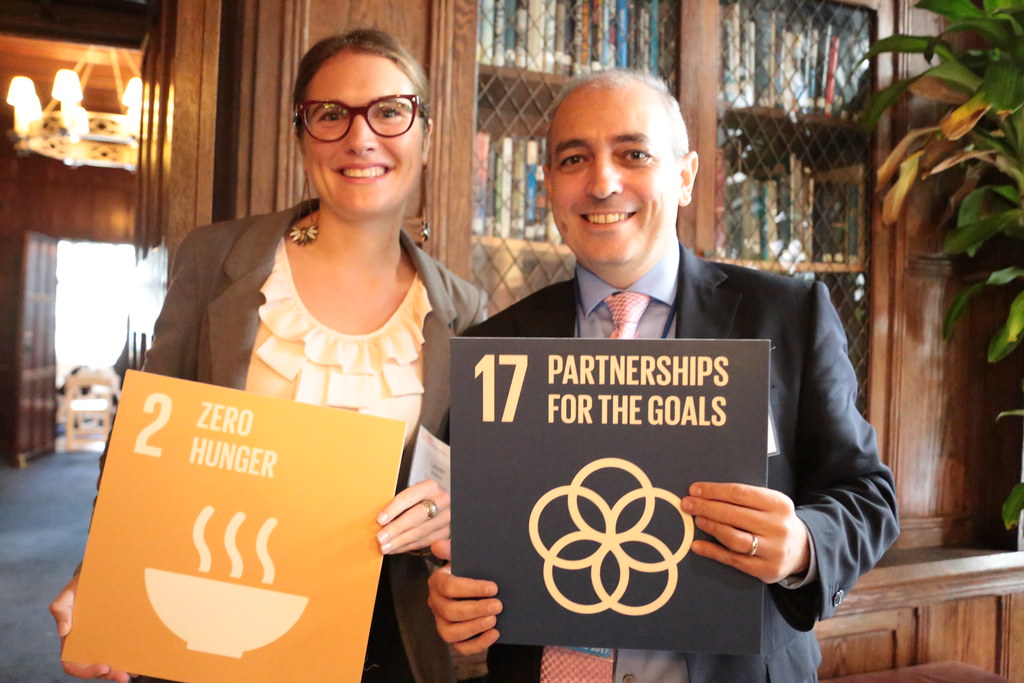Here’s the skinny: you’ve spent decades socking away every penny you could into IRAs, 401(k)s, HSAs, and whatever else the IRS would let you shelter. Now, with your nest egg humming along, you’ve got to figure out how to keep Uncle Sam from snatching too big a slice when those Required Minimum Distributions (RMDs) kick in at age 73. Enter a host of “creative” strategies—some newly turbocharged by legislation like SECURE 2.0, others simply dusted-off classics—that let affluent retirees divert, delay, or disguise taxable income. From Roth backdoors to philanthropic sleight-of-hand, these tactics aren’t just for Wall Street titans anymore; plenty of savvy older Americans are quietly routing their retirement cash through loopholes so smooth it practically squeaks. Below, we break down 15 of the juiciest plays, each one a ticket to keeping more of your golden years gold. No PhD in tax law required—but maybe keep your CPA on speed dial.
1. Backdoor Roth IRAs

Retirees earning too much for a direct Roth contribution can sneak funds into a Roth IRA by first stuffing them into a traditional IRA and then converting—hence the “backdoor” moniker. It’s perfectly legal, though a bit of paperwork gymnastics is involved: you make a non-deductible contribution to a traditional IRA, then recharacterize that balance into a Roth. Once inside, the money grows tax-free forever, and withdrawals down the road aren’t taxed. That’s music to the ears of anyone worried about RMD-driven income spikes in later years, since Roth IRAs have no RMDs at all. The strategy has been spotlighted by Kiplinger as a go-to for high-earners who want to sidestep income thresholds and lock in tax-free growth. Sure, you’ll owe income tax on the conversion itself, but that bite in year one is often a fair trade for decades of tax immunity—and might even keep you in a lower bracket over the long haul.
This isn’t just theoretical: according to industry data, backdoor Roths have surged since SECURE 2.0 eased age caps on traditional IRA conversions, making it easier for retirees 70½ and up to execute this move. Financial planners now routinely model out multi-year conversion ladders—spreading taxable conversions across smaller income brackets—to smooth out the tax hit. And with the average Roth IRA account balance still modest, many advisors say there’s room for wealthier retirees to turbocharge their portfolios this way. It’s worth noting, though, that you’ll need to file IRS Form 8606 to track your non-deductible contributions properly; skip it, and the IRS will assume you want to pay taxes again. All told, the backdoor Roth remains a blockbuster loophole for those who can pay the piper today to avoid a lifetime of tax returns tomorrow.
2. Qualified Charitable Distributions (QCDs)

When you hit 73 and RMDs loom, you can sidestep the tax on up to $100,000 of your annual IRA withdrawals by routing them straight to a charity via a Qualified Charitable Distribution. A QCD counts toward your RMD but never shows up as taxable income on your 1040—exactly what a tax-savvy retiree wants. According to AARP, this strategy can save serious money if you’re charitably inclined, letting you support causes you care about while keeping your adjusted gross income lower (which also helps avoid higher Medicare premiums). It’s ideal for those who don’t itemize deductions—since QCDs aren’t subject to AGI limits the way cash gifts are—and perfectly legal for anyone 70½ or older with a traditional IRA.
Here’s the kicker: if you’ve got a donor-advised fund (DAF) but still want the QCD benefit, you can make the QCD directly and then advise your DAF on where to grant it—keeping your philanthropic legacy alive while squeezing out even more tax efficiency. Just be wary of private foundation or DAF rules that could disallow the transfer; stick to qualified public charities, and you’re golden. Since the QCD limit resets each year (and may index up over time), it’s also something to revisit annually—especially if you don’t need the cash and would rather see it help others.
3. Health Savings Accounts as Mega-Tax Shelters

Most folks think of HSAs merely as medical expense funds—but for high-net-worth retirees, they’re secretly a third tax-free retirement account. Contributions are deductible, growth is tax-free, and—here’s the twist—once you hit 65 you can withdrawal for any purpose penalty-free, though non-medical uses are taxed as ordinary income. Better yet, you can pay out-of-pocket for medical bills now and let your HSA investments compound for decades, then reimburse yourself at will. As AP News notes, this triple-tax benefit can swell into a six-figure pot if you max out catch-up contributions and invest prudently.
Given expected healthcare costs north of $300,000 for a retired couple, tapping an HSA later can feel like free money—provided you’ve bankrolled it responsibly and organized receipts. You’re also not stuck with a “use it or lose it” FSA scenario; HSA balances roll over indefinitely. The catch? You have to be enrolled in a high-deductible health plan to contribute, and once you enroll in Medicare you lose eligibility for further contributions. Even so, an HSA often outpaces IRAs and 401(k)s in pure tax efficiency, making it a sleeper hit for the well-heeled retiree’s toolbox.
4. Donor-Advised Funds to “Warehouse” Deductions

If you want to front-load tax deductions but delay actual giving, donor-advised funds (DAFs) are your new BFF. Drop cash or appreciated securities into a DAF to claim an immediate deduction—up to 60% of AGI for cash gifts or 30% for appreciated assets—then dole out grants to charities on your own timeline. The Wall Street Journal highlights how retirees use DAFs to bunch multiple years of giving into one giant tax year to exceed the standard deduction threshold, then trickle out the grants over time.
Beyond timing, DAFs also let you gift complex assets—private stock, real estate, fine art—avoid capital gains tax on the sale, and still command where the money ultimately lands. And with administrative fees often lower than those of private foundations, it’s a no-brainer for anyone who doesn’t mind a little extra paperwork in exchange for big tax savings. Just remember that DAF contributions are irrevocable: once you drop funds in, they legally belong to the sponsoring charity. But for retirees eyeing tax brackets and estate planning, that’s a small price to pay for a powerful philanthropic lever.
5. Strategic Roth Conversions to Avoid Bracket Creep

Converting select chunks of your traditional IRA or 401(k) to a Roth in low-income years can preemptively dodge future tax hikes—and carve out room to keep Social Security and Medicare premiums from ballooning. Bloomberg explains that retirees who convert when market dips shrink account values effectively “buy” tax-free growth at a discount, locking in today’s lower brackets. Done smartly, you can fill up each marginal bracket without overshooting, then enjoy decades of tax-free distributions.
The trick is timing: plan conversions before big one-time income events (like selling real estate or exercising stock options) or before RMDs begin at 73, since RMDs can catapult you into higher brackets. Some retirees even convert just enough each year to stay firmly in the 12% bracket, leaving cushion for inflation-adjusted future RMDs. While you’ll pay tax on the conversion itself, analysts argue that pre-paying at 12% or 22% beats 30%+ rates down the road—especially if Congress tightens the screws on tax-deferred accounts. As always, run projections with a trusted advisor to nail the sweet spot.
6. Installment Sales of Appreciated Assets

Instead of selling a big-ticket asset—say, a second home or stocks—outright, retirees can structure an installment sale, spreading both the capital gains and corresponding tax liability over multiple years. That way, each year’s reported gain might fall into a lower bracket, keeping you well below top rates. Plus, you get a steady income stream, very handy in retirement.
By customizing the sale terms—interest rate, payment schedule—you can even tailor cash flow to match your lifestyle needs or bracket limits. Just be aware that you’ll need to report interest income on each payment, and there are rules if a buyer defaults. But for wealthy retirees sitting on giant unrealized gains, it’s a slick way to monetize assets without triggering one massive tax hit.
7. Private Annuities to Defer Recognition

A private annuity lets you transfer ownership of an appreciated asset—like real estate or business interests—to your child or trust in exchange for lifetime income payments. You effectively swap a lump-sum tax bill (on the sale) for a promised stream of payments, deferring gain recognition until each payment arrives.
These arrangements must meet strict IRS present-value rules and can’t be between spouses, but they’re a time-honored way to shift both asset value and tax burden across generations while still securing your own cash flow. Lawyers and CPAs will charge up the wazoo, but the potential tax deferral can more than cover the fees for many high-net-worth estates.
8. Conservation Easements on Personal Land

Own a swath of timberland or a historic family estate? Donate a conservation easement—permanently restricting development rights—to a qualified land trust and claim a charitable deduction based on the reduction in property value.
You can deduct up to 50% of your AGI in a single year (or 100% for farmers/ranchers) and carry forward unused deductions for 15 more years. It’s a green way to preserve open space and slash your tax bill in one big chunk—though you’ll want a top-tier appraiser to document the value drop convincingly. Bonus: you still retain ownership of the land, meaning you can live on it, farm it, or pass it on to heirs—just minus the strip-mall potential. For folks with a soft spot for nature and a hard dislike of taxes, this one’s basically a Patagonia jacket with a tax shield. Just be prepared for some paperwork and ongoing land-use restrictions that come with the territory (literally).
9. Captive Insurance Companies

High-net-worth retirees with unique risk profiles—think classic-car collectors or hobby farms—can form a “captive” insurance company to insure themselves. Premiums paid to the captive are tax-deductible insurance costs, while the captive’s underwriting profits accumulate tax-deferred.
If structured properly, you can eventually access those captive reserves tax-efficiently and support philanthropic or family trust goals. It’s complex and under IRS scrutiny, but for those with million-dollar collectibles, it’s a tailored solution. Think of it as DIY insurance that’s also a mini investment firm and estate planning tool rolled into one. You’ll need actuaries, legal pros, and a tolerance for compliance audits, but the flexibility and control can be game-changing. Just don’t try this at home without a very sharp team—this loophole isn’t for the casual dabbler.
10. Split-Interest Gifts via Charitable Remainder Trusts

Fund a charitable remainder unitrust (CRUT) or annuity trust (CRAT) with appreciated assets: you receive fixed or variable income for life (or term), and the remainder goes to charity. You get an immediate partial charitable deduction and defer capital gains tax on the asset sale within the trust.
This combo of lifetime income, tax deduction, and deferred gain is a perennial favorite among retirees who love philanthropy but want to keep a reliable paycheck. Plus, the ability to offload low-basis stock without coughing up capital gains is a sneaky good bonus. You’re essentially setting up your own mini pension—charity gets the leftovers, and you live off the top. Want to make it even more legacy-chic? Stack this with a donor-advised fund and make your family the “board of directors” for decades of charitable giving.
11. 529 Plan “Front-Loading” for Grandkids

You can gift up to five years’ worth of the annual gift tax exclusion—currently $18,000 per beneficiary per year—in one fell swoop to a beneficiary’s 529 college savings plan. That’s $90,000 ($180,000 per married couple) up front, instantly removing that chunk from your taxable estate.
If your grandkids don’t use it all, they can invest or rollover the balance for other family members. It’s a way to accelerate estate-shrinkage strategy and let compounding work its magic under tax-free rules. Even better, you maintain control over the account, so you can pull the plug if your grandkid ditches college for a surf shack in Bali. Thanks to SECURE 2.0, leftover funds can even be rolled into a Roth IRA for the beneficiary after 15 years—turning unused tuition money into future retirement dough. Basically, it’s the Swiss Army knife of tax-advantaged giving.
12. State of Residence “Flip” for No Income Tax

Retire in a state with no income tax—Florida, Texas, or even a Puerto Rican exclave—and your IRA distributions, Roth withdrawals, and Social Security may be exempt from state tax.
If you’re mobile, a well-timed change of domicile (with six months’ bona fide residency) can cut your combined federal and state tax bite significantly. Just mind the exit taxes and community-property pitfalls if you’re leaving California or New York. Some states, like California, don’t let go easily—they may audit your lifestyle down to your country club memberships. Make the move legit: switch your primary doctor, voter registration, bank branch, and yes—get that new driver’s license. Retirees chasing sunshine and tax breaks should pack light and plan smart.
13. Family Limited Partnerships (FLPs)

Transfer business or rental real estate interests into an FLP, then gift or sell discounted partnership units to heirs. The courts have allowed discounts—up to 30%—for lack of marketability and minority interests.
That reduces both gift and estate tax valuations, though recent IRS guidance has tightened discount allowances, so you’ll need robust documentation and legal support. Still, for families managing real estate empires or business shares, it’s a classic tax-minimizing power move. You stay in control as the general partner, while slowly shifting value out of your estate. Just don’t get too aggressive with discounts—auditors are wise to sloppy setups and sweetheart valuations. Pro tip: FLPs pair beautifully with trusts for layered asset protection and intergenerational wealth plays.
14. Intentionally Defective Grantor Trusts (IDGTs)

Sell assets to an IDGT in exchange for a promissory note: because you’re the “grantor,” you pay tax on the trust’s income, further reducing your estate. Meanwhile, the trust’s assets grow outside your taxable estate, and heirs get principal transfers gift- or estate-tax-free.
This technique requires an irrevocable trust and careful drafting but can shift substantial wealth beneath the estate-tax radar. Think of it like turbocharging your estate planning by willingly eating the income taxes now so your heirs don’t have to later. It’s “defective” in IRS lingo, but in your spreadsheet? A chef’s kiss. Just keep in mind that if you live too long, those note payments could pile back into your estate—so timing matters.
15. “Divide and Conquer” via Multiple Roth Converters

Rather than one mega conversion, split your traditional accounts into smaller pots across different custodians. Convert each separately to Roth IRAs to reset the five-year holding clock on each chunk.
That way, you stagger penalty-free withdrawals, manage pro-rata rules more effectively if you have other traditional IRA balances, and create multiple Roth buckets with varying start dates—maximizing future flexibility and tax planning finesse. It’s like meal prepping for your retirement withdrawals. You also get more granular control over your tax bracket each year by choosing how much to convert from each mini-account. Some retirees even match buckets to future expenses—one for travel, one for grandkid college help, one for just-in-case money.
This article is for informational purposes only and should not be construed as financial advice. Consult a financial professional before making investment or other financial decisions. The author and publisher make no warranties of any kind.









